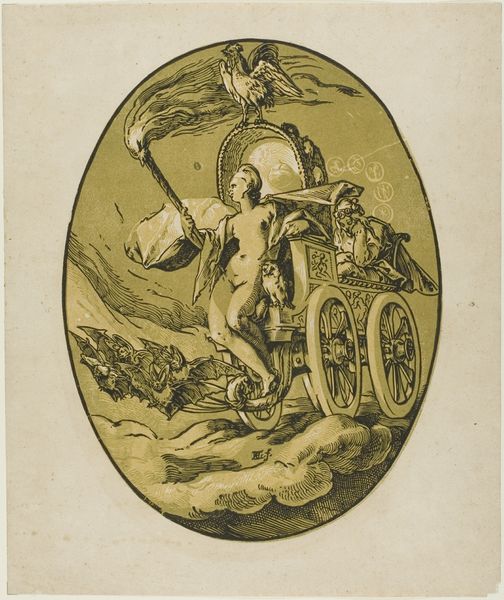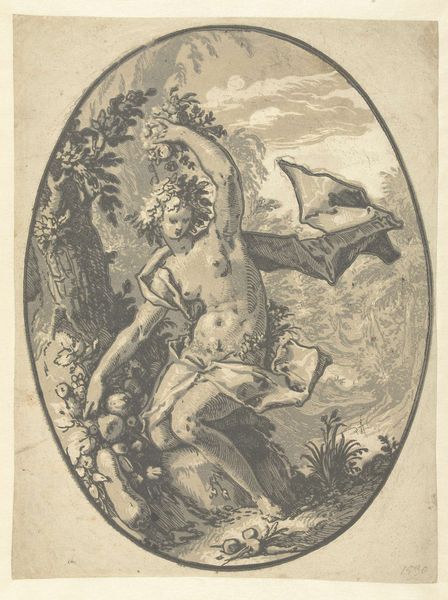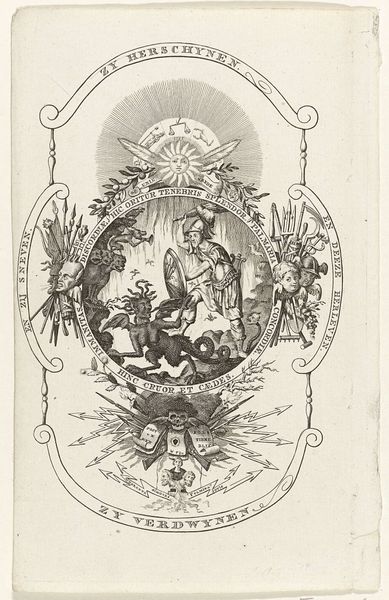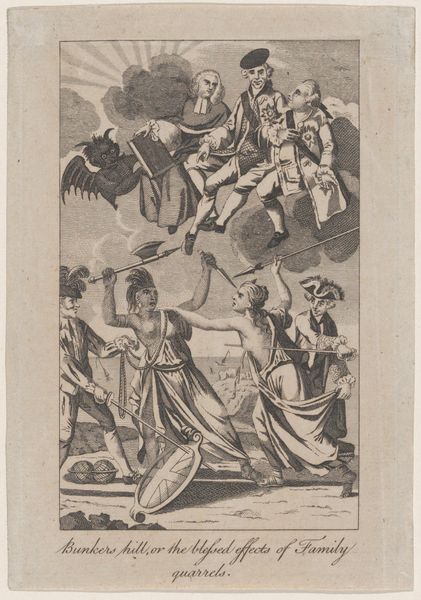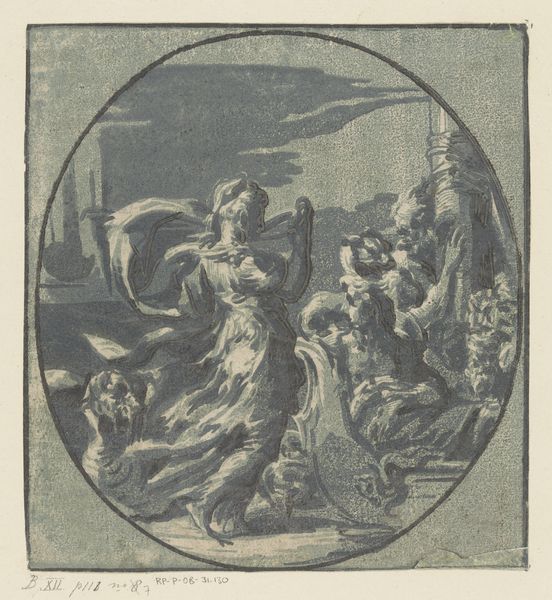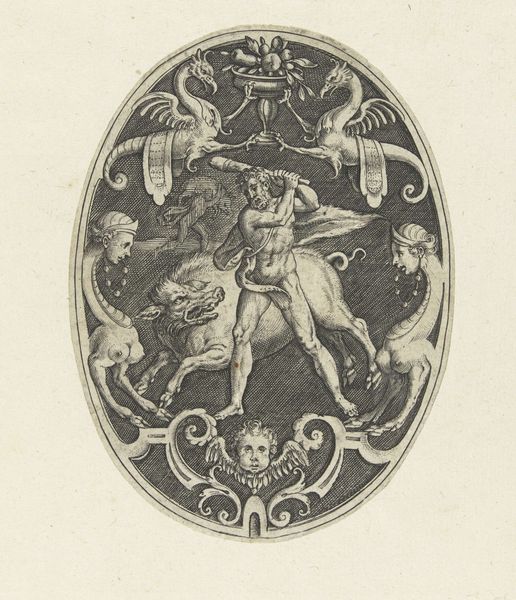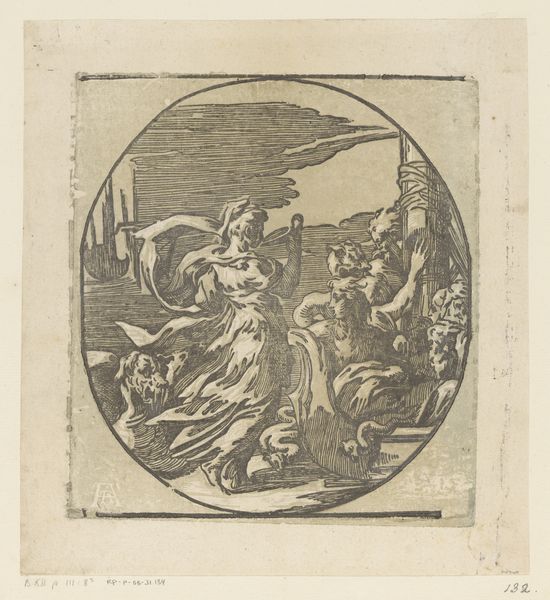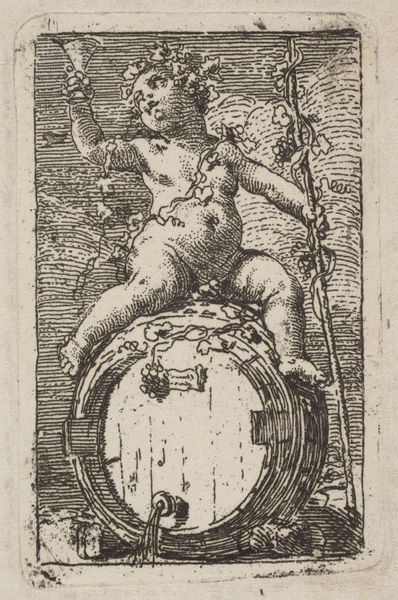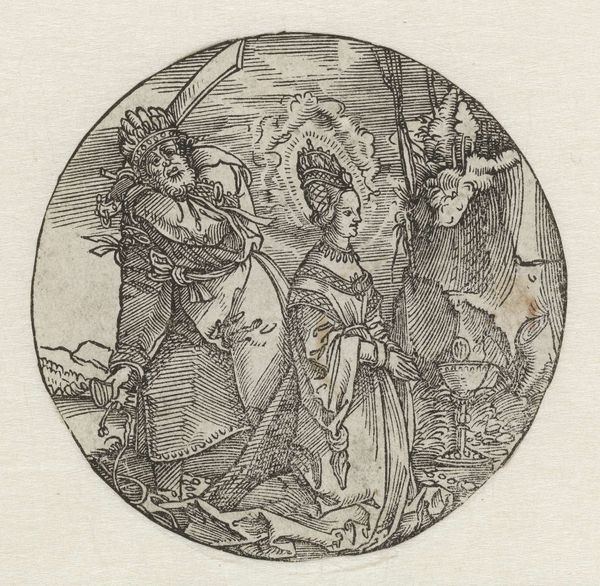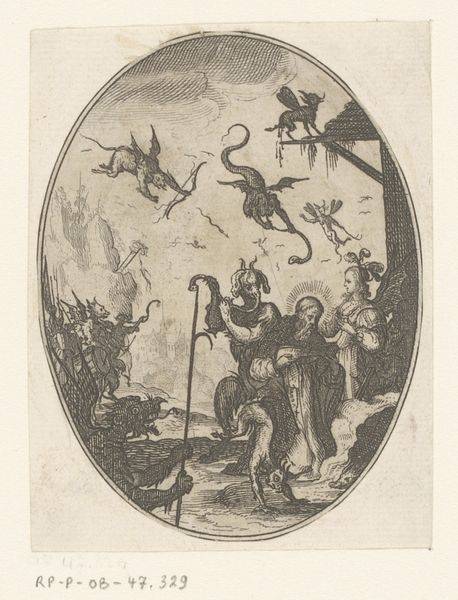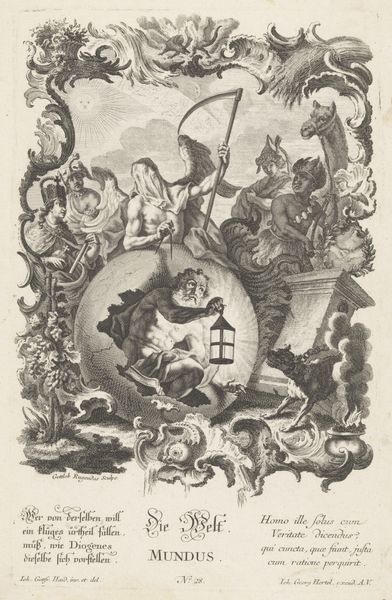
Nox, plate seven from Demogorgon and the Deities c. 1588 - 1590
0:00
0:00
drawing, print, paper, ink, engraving
#
drawing
#
allegory
# print
#
mannerism
#
paper
#
ink
#
engraving
Dimensions: 345 × 263 mm (oval)
Copyright: Public Domain
Curator: Hendrick Goltzius’s “Nox, plate seven from Demogorgon and the Deities,” created around 1588 to 1590, offers a striking depiction of the goddess of night, rendered in ink on paper through engraving. Editor: Oh, my. Right away, it's… intense, almost dreamlike. The light feels both fragile and overwhelmingly bright, and is she… riding a chariot pulled by bats? Curator: Yes, a fitting mode of transport for the personification of Night, don't you think? Consider the period; Goltzius worked in the Mannerist style, favoring exaggerated forms and dramatic compositions, which we certainly see here. There's a real emphasis on technical virtuosity—the detail is amazing. Editor: Virtuosity, certainly, but toward what end? Look at her body language: she holds a torch, but is it to illuminate, or to threaten? And those bubbles…are they bursting, fragile futures? I read this not just as an allegory of night, but perhaps of a societal unease. Curator: I see that. The etching suggests a time of profound cultural anxieties—religious wars, shifting political landscapes, nascent scientific discoveries. And placing the goddess atop a chariot being drawn by creatures typically associated with shadows lends weight to her journey across civilization. This could serve as social commentary, especially given the roosters, heralds of morning, appear as onlookers to her display. Editor: The presence of both roosters and bats brings to mind how identity and perception can transform at night. We think of nighttime spaces as liberating because they bring anonymity. Maybe Goltzius’s allegory shows that the promise of darkness brings a host of anxieties around class and status. Curator: It’s intriguing to see those layered interpretations arise, that we are having a different cultural context speak with the art from this period. What strikes me still is the artist's capacity to craft such dynamic images through engravings. I guess there is a virtuosity to making images about a topic of discussion and transformation at once. Editor: Right. So, despite—or maybe because of—its unsettling qualities, “Nox” really compels us to reflect on our relationship with the darkness, both literal and metaphorical. It shows that both can be places of creativity.
Comments
No comments
Be the first to comment and join the conversation on the ultimate creative platform.
